Truck Camper Magazine asks Don Payne, Happijac’s Product Manager, about the proper use and maintenance of Happijac’s tie-downs and turnbuckles.

Happijac Company has been manufacturing tie-downs and turnbuckles for over thirty years. When we first visited the company in 2007, Marty Rasmussen, Happijac’s Founder, shared with us Happijac’s rich history going into great detail about how he designed, developed, and tested Happijac’s tie-downs and turnbuckles.
As the story goes, Marty had an incident where his truck and camper became separated prompting him to develop the spring loaded turnbuckles that we take for granted today. Clearly that was one incident that lead to an important breakthrough for truck campers.
For this story, we wanted to find out more about how to properly use and maintain a Happijac tie-down and turnbuckle system. It turns out there are some subtle but important details about how a Happijac tie-down and turnbuckle system should be installed and these details can make a big difference in the systems effectiveness and longevity.
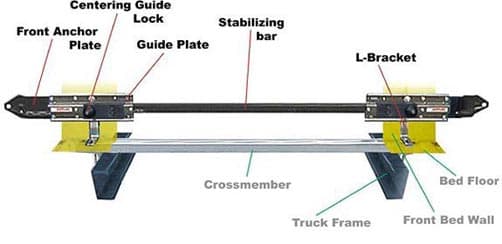
The following is our interview with Don Payne, Happijac’s Product Manager, on the proper use and maintenance of Happijac’s tie-downs and turnbuckles.
TCM: Give us an overview of the Happijac tie-down and turnbuckle system and how it works.
Don: Happijac’s tie-down and turnbuckle systems are frame and bed mounted. This means the tie-downs are bolted into the frame of the truck as well as the front of the bed of the truck.
The real key to Happijac’s tie-down and turnbuckle system is an I-beam truss that is formed with a stabilizing bar, the front of the truck bed, and the truck frame. This I-beam truss is one of the strongest fundamental structural forms pound for pound.
As a result of our I-bean truss design, Happijac can offer a light weight twenty-four pound system that can hold and control the camper movement in every possible direction. Other alternative tie-downs add up to eighty pounds and add unneeded weight.
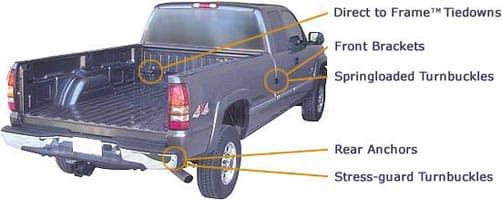
A set of centering guide locks and bumpers are mounted on the stabilizing bar and guide plates to aid in loading a camper and ensure that a camper is positioned correctly and remains positioned correctly in the truck bed.
The placement of Happijac’s tie-down anchor points and the use of Happijac’s linear compression spring loaded turnbuckles creates tremendous structural strength by triangulating leveraged counter forces.
As a complete system, the Happijac tie-down and turnbuckle system effectively controls the yaw, pitch, and roll of a truck camper in motion. That is front to back, side to side, and left to right movement. This is accomplished by pulling the camper forward, down and toward the center at the same time.
The high mounting angle of the tie-downs controls the camper from getting off center or moving in the back of your truck. Again, the Happijac system is designed to control camper movement.
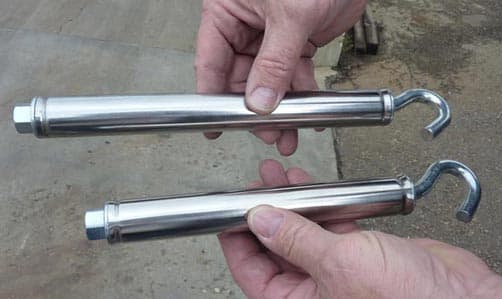
TCM: What is the correct way to connect a Happijac turnbuckle?
Don: Happijac turnbuckles are sold in sets of four including two long barrel turnbuckles and two shorter barrel turnbuckles.
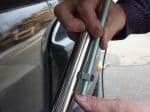 |
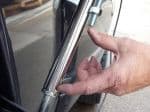 |
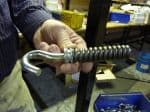 |
The longer barrels go on the front because they contain the linear compression spring. You want all four barrels facing down to allow rain to flow out of the barrel.
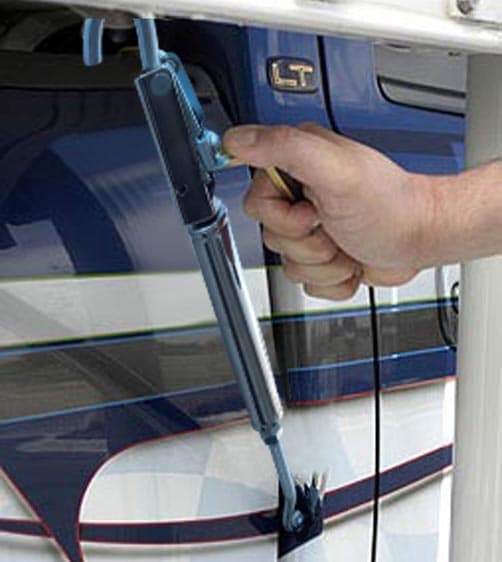
If you’re using our Qwik-Load turnbuckle, it best to install them with the threaded hook up if possible. If it is not possible, then they can be installed in the reverse.
TCM: I bet a lot of folks are running out to their camper to turn their turnbuckle barrels upside down. We have certainly made that mistake before. Why don’t the rear turnbuckles also feature the linear compression springs?
Don: In place of the linear compression spring that is in the front turnbuckle, there are rubber bushings inside the rear turnbuckles. Having springs in all four turnbuckles promotes porpoising, a front to back rocking or hopping that happens when traveling at speed or on uneven and undulating highways.
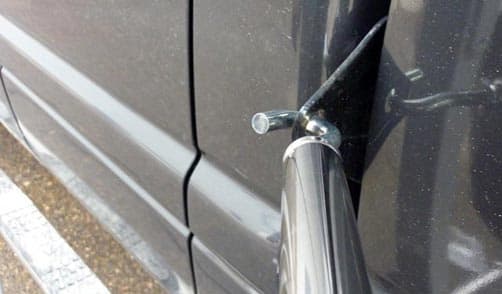
TCM: Which way should your Happijac turnbuckle hooks be facing?
Don: You want the hooks to be facing out when you attach the turnbuckles to the tie-down so that the no contact with the truck body can occur.
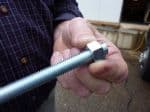 |
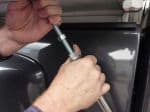 |
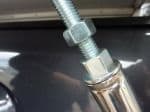 |
TCM: That’s another mistake we’ve made as a few scratches on our truck can attest. How tight should the turnbuckles be?
Don: You want to tighten the front turnbuckles until the slack or wiggle is out and the turnbuckle is snug. Put a mark on the hook opposite the threaded rod next to the barrel. Tighten the turnbuckle until a quarter to three-eighths of an inch of the hook is pulled out of the turnbuckle. This compresses the spring giving you about 300 pounds of pressure. Tighten the jam nut to keep it set.
For the rear turnbuckles, also tighten them until the slack or wiggle is out and then tighten the jam nuts to the bottom of the barrels. The purpose of the rear turnbuckles is to keep the camper from bouncing up and down. The side to side movement is controlled by the front turnbuckles.
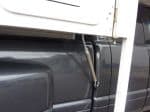 |
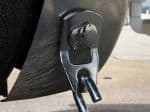 |
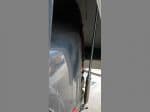 |
TCM: How should an owner of an installed Happijac tie-down and turnbuckle system properly maintain it?
Don: Happijac recommends that you wax your turnbuckles and black anchor plate with a high quality liquid automotive wax two to four times a year depending on the weather conditions and climate in your area. You can also grease the threads of your turnbuckle with a couple of drops of a synthetic grease.
TCM: Should people bring their turnbuckles inside when they are not using their campers?
Don: Yes. The turnbuckles are a combination of stainless steel, chrome plated steel, and zinc plated parts. Even though they are designed to withstand the elements, it is a good idea to remove them for storage. This protects them from the possibility of theft and unnecessary wear and tear.
TCM: And I bet that you just sent a few more people out to unhook their turnbuckles and bring them inside. Between waxing the turnbuckles a few times a year and taking them off for storage, the turnbuckles should be able to stay like new for many years.
Don: Exactly right. Unfortunately, too many folks leave their turnbuckles on their rigs year round, even through the winter when the camper is winterized. I would add to your list that it’s a good idea to keep your turnbuckles clean. Wash them with soap and water if they’ve been exposed to dirt, sand, salt, or even a healthy number of bugs. After they’ve been cleaned and dried, apply a fresh coating of automotive wax, and you’re good to go.
TCM: Another comment we sometimes hear about Happijac turnbuckles is that they squeak going down the road. What can we do to address this?
Don: This is caused by the spring sometimes contacting the inside of the barrel. If this is a concern for you, remove the threaded hook from your turnbuckles and put a shot of silicon spray down the barrel. That should stop the squeaking noise. The squeaking will not damage your turnbuckle but following this procedure will control the situation.
TCM: Thank you Don. I know lots of folks are probably going to get a lot better performance and longevity out of their Happijac tie-down and turnbuckle system now that they know how to properly use and maintain it better.
Don: You’re welcome. And if anyone reading Truck Camper Magazine has further questions, please don’t hesitate to call us at 801-544-2585.
